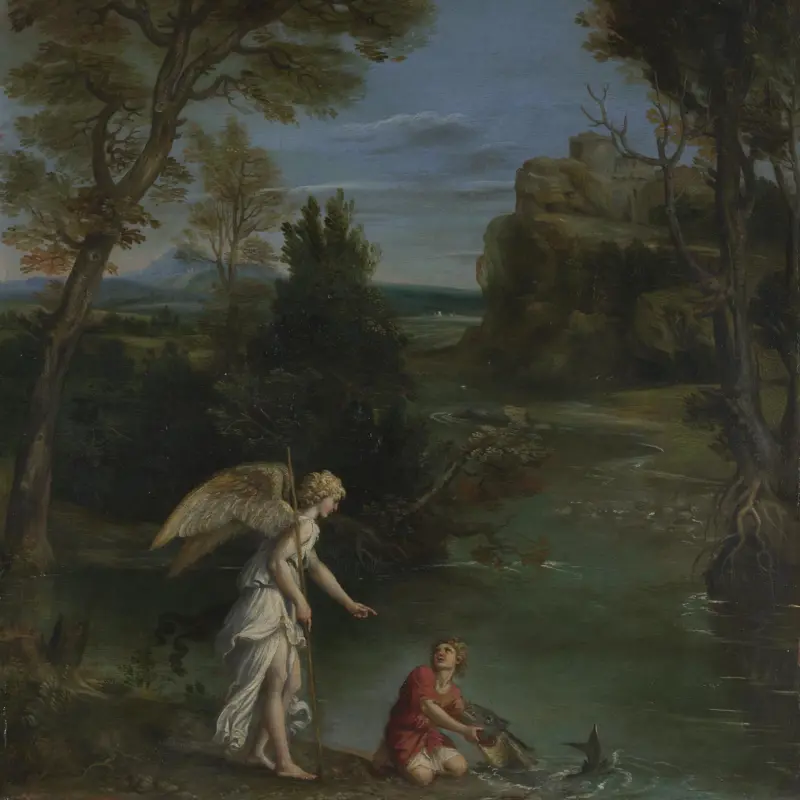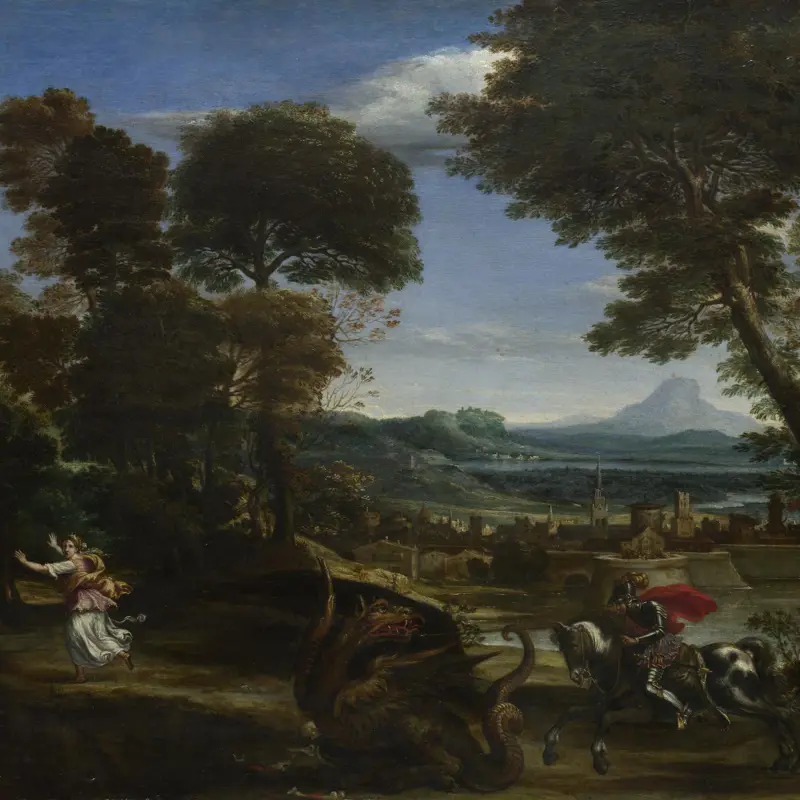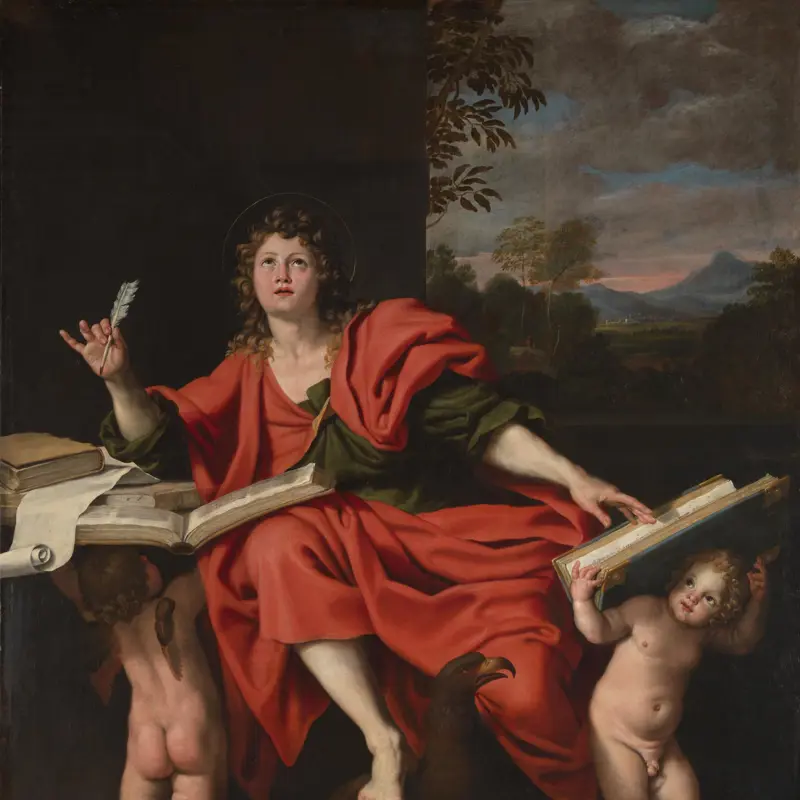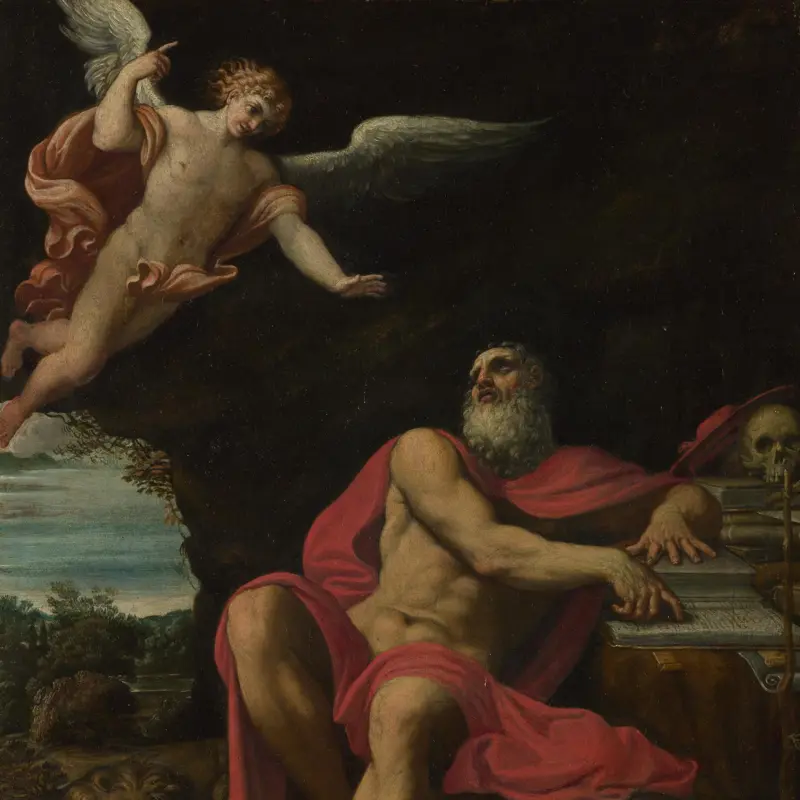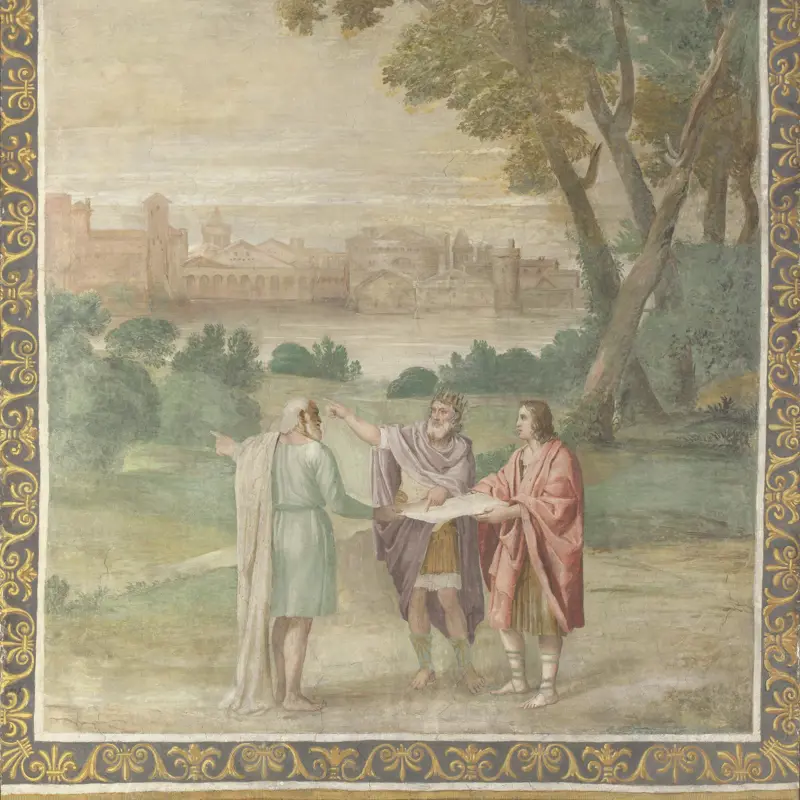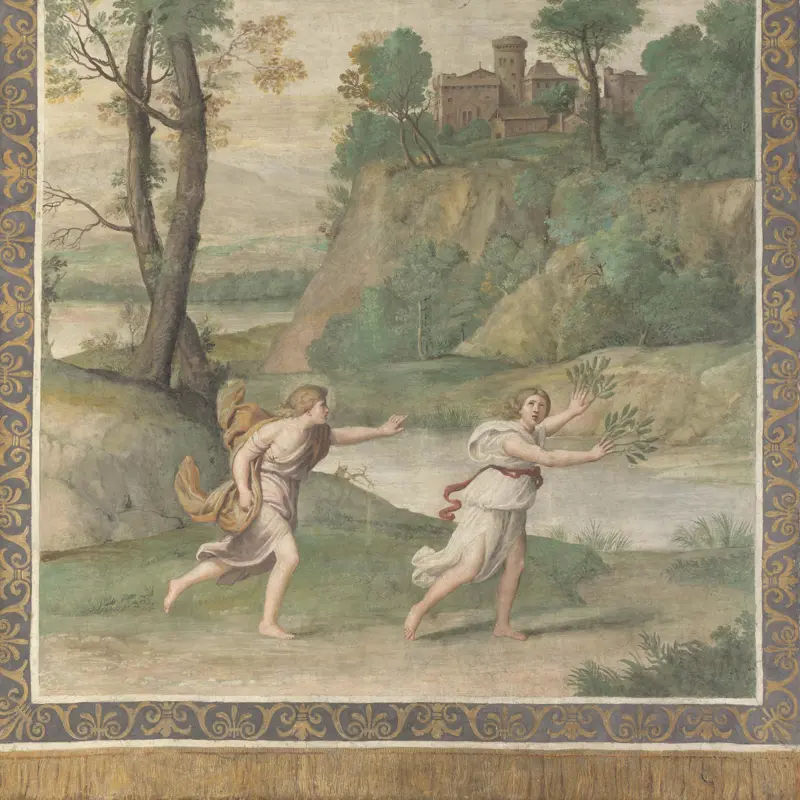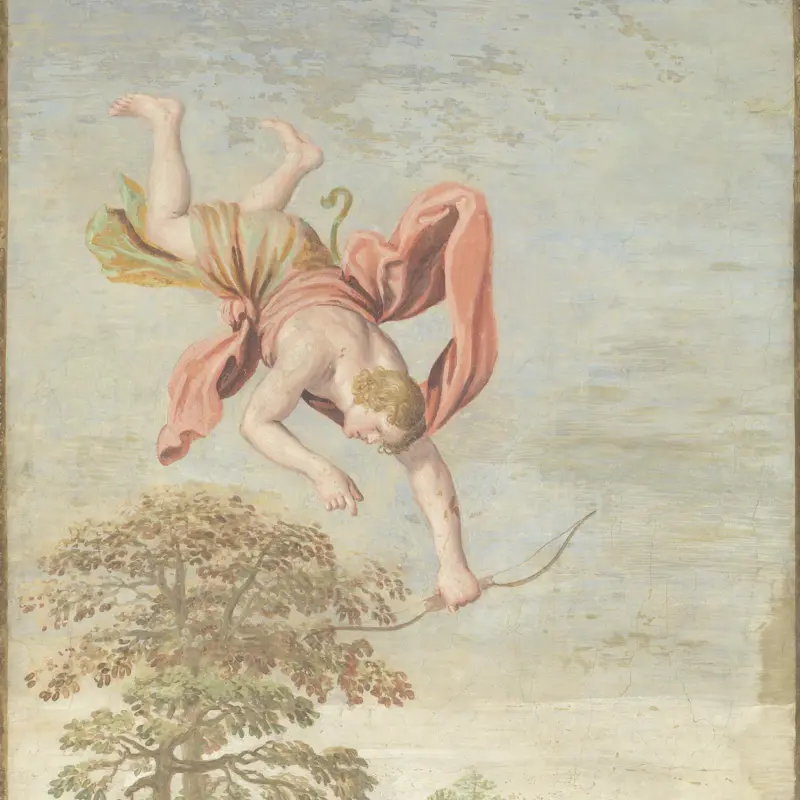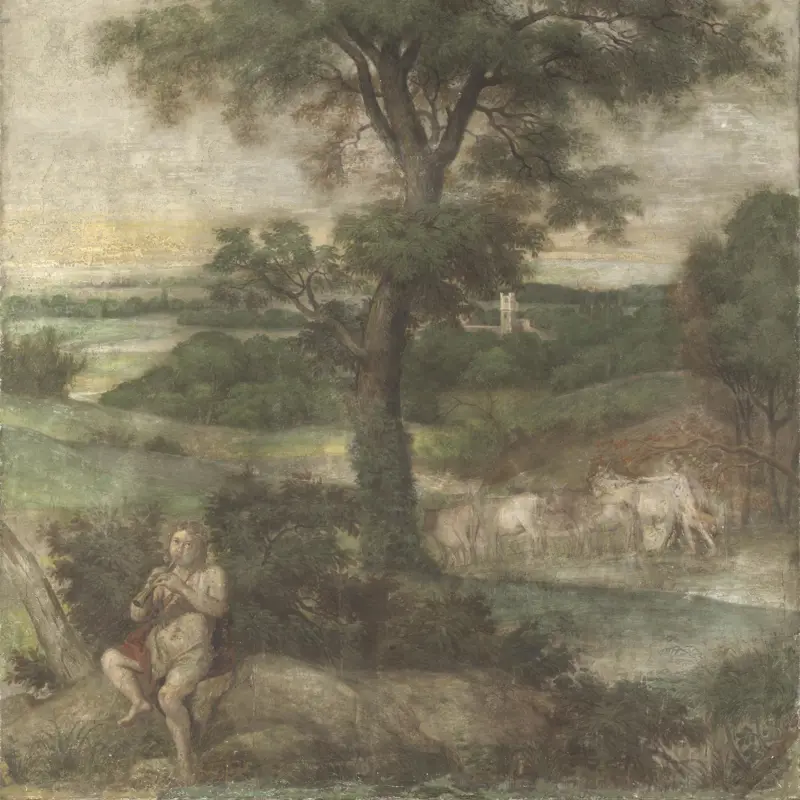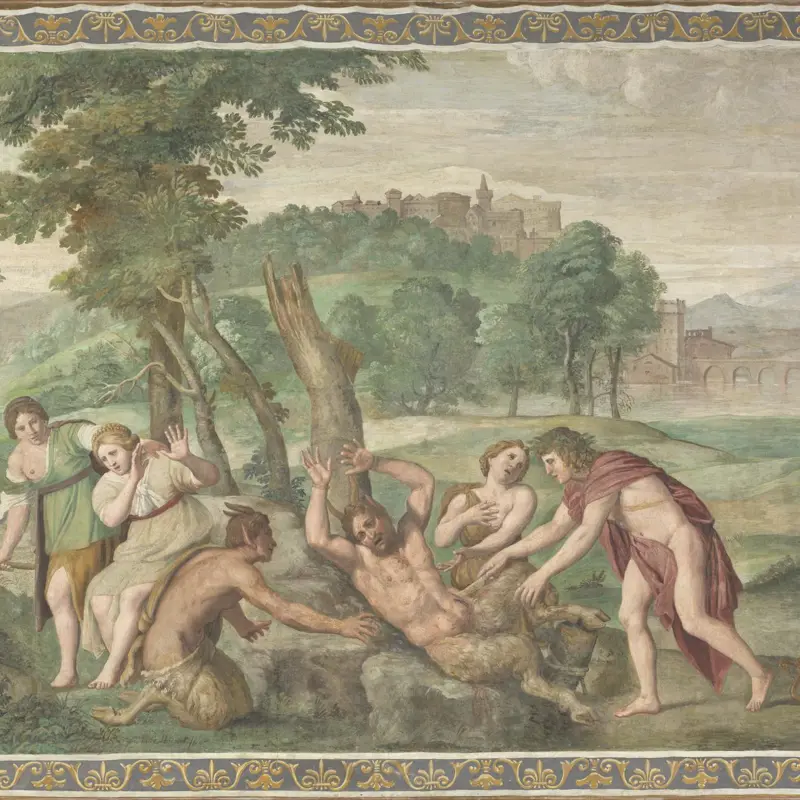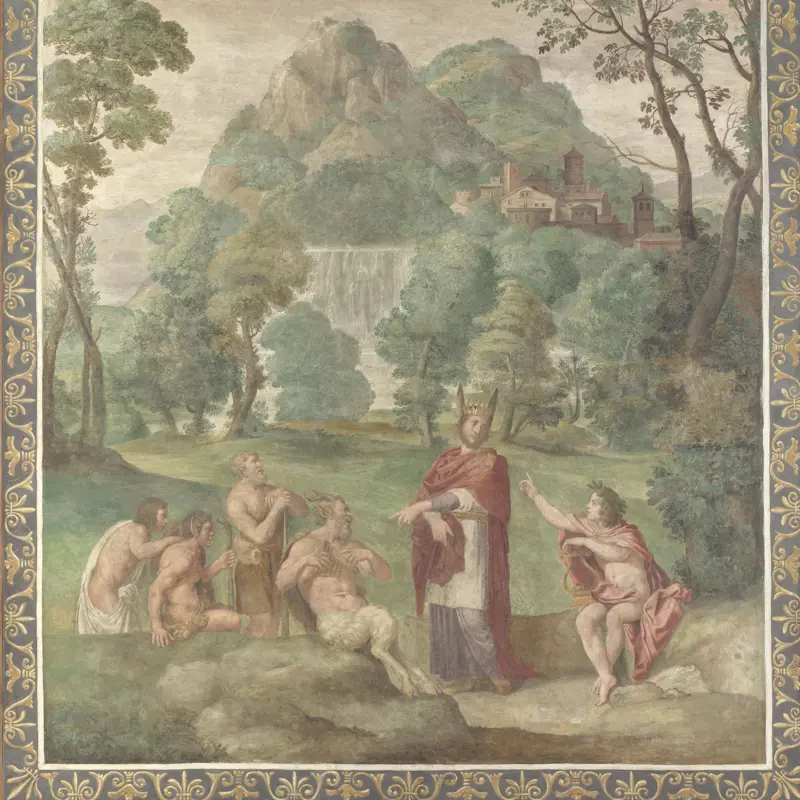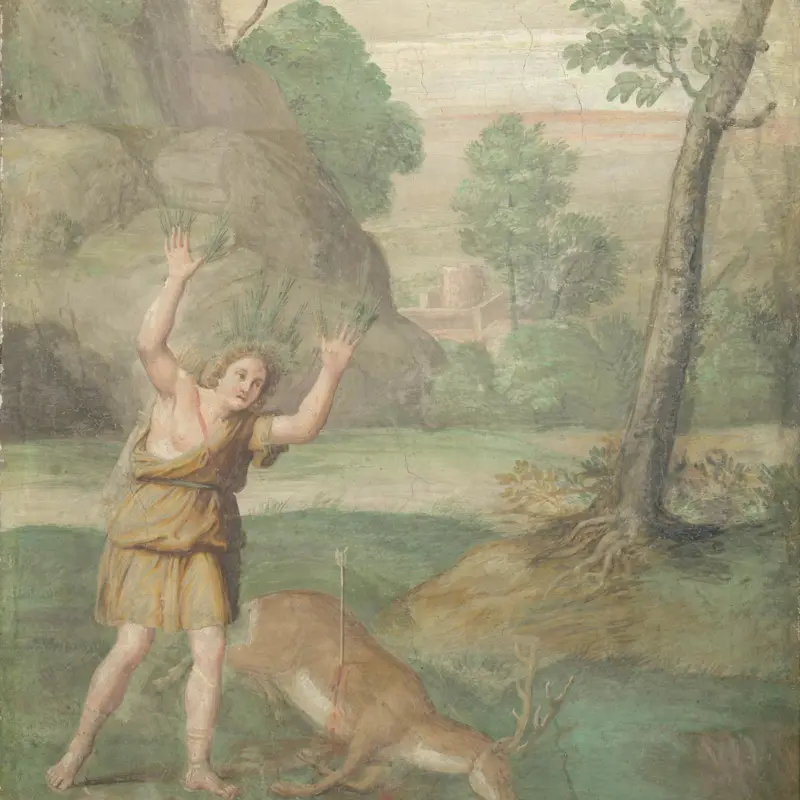Domenico Zampieri, called Domenichino, was one of the main followers of Annibale Carracci. He had probably arrived in Rome by 1602, when Annibale was working in the Palazzo Farnese. Domenichino was important as a painter of classical landscape, following Annibale. The Gallery contains a series of frescoes on mythological themes that he painted for the Villa Aldobrandini at Frascati.
Domenichino was born in Bologna, and trained there under Ludovico Carracci. In Rome he was also influenced by the works of Raphael, as can be seen in his celebrated frescoes on the life of Saint Cecilia in S. Luigi dei Francesi, probably completed by 1614. He returned to Bologna in 1617, but was active again in Rome in the 1620s, before moving to Naples. Here he frescoed the Cappella del Tesoro of the cathedral in a more markedly Baroque style than his earlier work. He died in Naples in 1641.
Both Poussin and Claude were influenced by his work, notably his landscapes.
Domenichino
1581 - 1641
Works by Domenichino
(Showing 6 of 13 works)
This is one of Domenichino’s most famous landscapes, and also one of his largest. It is closely based on Annibale Carracci’s Flight into Egypt, painted for the chapel of the Aldobrandini palace in Rome (Galleria Doria Pamphilj, Rome), one of the most influential classical landscape paintings in t...
Not on display
A young man kneels on a river bank, struggling to pull a large, wriggling fish out of the water. Behind him an angel points to the fish, and is clearly instructing him what to do with it. This is the story of Tobias and the Angel as told in the apocryphal Book of Tobit. Following the angel’s dire...
Saint George, a Christian knight, saved a city which was being terrorised by a dragon. Here he charges the beast, who crouches on a grisly collection of bloody bones. The princess, who was to be its next meal, makes a hasty escape on the left.Although ostensibly a history painting, it is the land...
An elderly but muscular man with an impressive beard sits in a rocky landscape. Beside him is a pile of books, on top of which sits a skull wearing a cardinal’s hat. He leans on a second pile, and points to the text of an open volume resting on a rocky ledge. This is the fourth-century scholar an...
Domenichino and assistants
Three men, one with a crown, stand in a landscape. They hold between them a large piece of paper, while two are pointing to a classical city in the background. The gods Apollo and Neptune have disguised themselves as mortals to advise King Laomedon on the building of Troy.This is one of ten fresc...
Not on display
Domenichino and assistants
Apollo in a red cloak shoots his arrows at two one-eyed men, one of whom lies prostrate on the ground as the other flees. These are the Cyclops, a mythical race of giants, each with a single eye in the middle of his forehead. This scene is one of ten frescoes which originally adorned the walls o...
Not on display
Domenichino and assistants
The sun god Apollo – identifiable by the golden rays around his head – pursues a young woman whose fingers are sprouting foliage. This is Daphne, a river nymph with whom the god has fallen in love. She rejects his advances and, rather than allowing him to catch her, is turned into a laurel tree....
Not on display
Domenichino and assistants
The Greek sun god Apollo tumbles from the sky to shoot his unfaithful lover, Coronis. This is one of ten frescoes which originally adorned the walls of a room in a garden pavilion in the grounds of the Villa Aldobrandini in Frascati, near Rome. Many of the stories, including this one, were take...
Not on display
Domenichino and assistants
A young man, naked but for a red cloak and an animal skin, is seated on a rock in the foreground, playing a pipe. This is Apollo, Greek god of the sun and of music and art, dressed as a shepherd. As a punishment for killing the Cyclops, Jupiter sent him to be herdsman to Admetus, king of Pherae i...
Not on display
Domenichino and assistants
The mythological story of the musical competition between the god Apollo and the satyr Marsyas is told in Ovid’s Metamorphoses. Marsyas challenged Apollo to a music contest, which the god won. To punish him for his presumption, Apollo skinned him alive.This is one of ten frescoes by Domenichino a...
Domenichino and assistants
A group of figures sits in a classical landscape. In the middle stands a king who seems to have grown large ears. This is the Judgement of Midas, taken from the Roman poet Ovid’s Metamorphoses. On the right is the sun god Apollo, wearing a red cloak and a laurel crown and holding his lyre; on the...
Not on display
Domenichino and assistants
A young man stands next to a dead stag which he has just shot with an arrow: his bow lies on the ground. His hands are flung up in horror, and greenery is growing from his fingers and head. This is the story of Cyparissus, a favourite of Apollo, who accidentally killed his own pet stag. He was so...
Not on display
You've viewed 6 of 13 works


